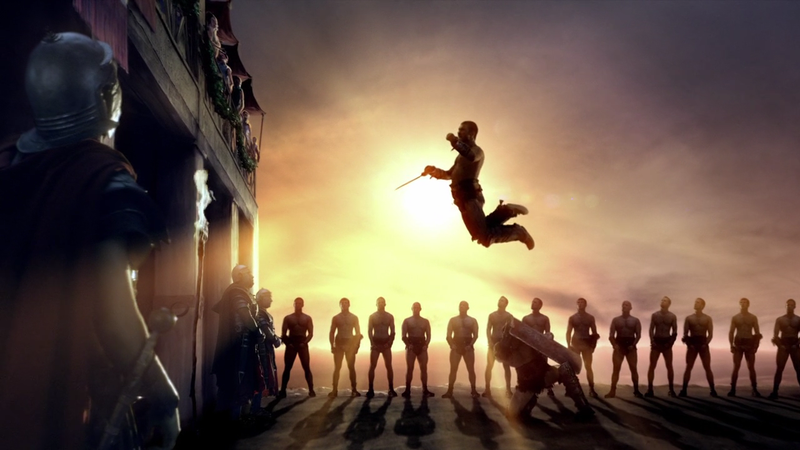Although Cornell University has the highest acceptance rates of all Ivy League schools, this does not mean that it's an easy school to get into. To be a competitive applicant for any of these eight prestigious institutions, you cannot slack off when it comes to your applications. Start planning your acceptance strategies early, which means studying hard at school and planning ahead for your standardized tests. If you have not been involved in an extracurricular activity since childhood, plan to seriously commit to an activity as early as you can. Choose something you love to do as this will be evident in your application components. Most importantly, do not choose to go to an Ivy League school for appearances.
Choose a program you actually want to attend and graduate from, rather than a program that will look good on your CV. Prestige and social status do not necessarily translate into better educational fit for you. Choose happiness and invest in your education in a school you truly want to attend. The term Ivy League is now most commonly used to refer to eight universities who formed the "Ivy League" athletic conference. The eight member institutions are all located in the Northeast region of the United States and are privately owned and controlled. Undergraduate enrollments among the Ivy League schools range from about 4,000 to 14,000 , making them larger than those of a typical private liberal arts college and smaller than a typical public state university.
Ivy League university financial endowments are in the billions of dollars, ranging from Brown's over $2 billion to Harvard's over $30 billion, the largest financial endowment of any academic institution in the world. Although it's important to always aim for the sky and dream big, setting realistic goals for yourself is just as important. Hundreds of colleges out there can deliver better education to admitted students than the Ivies. Many of these schools, like "Public Ivy" universities are also more accessible and offer lower tuition fees, considering how the Ivies do not offer applicants any merit-based financial aid (only need-based aid).
It is easy to say "plan ahead", but there is a lot of advantage in knowing what school and program you would like to attend in the future. If you are certain about which school you want to enroll in, it might be wise to apply through the Early Action/Early Decision program. This way, your deadline for application is earlier, but so is your response date.
To utilize this opportunity, you must research your school of choice and determine whether you are a good fit for the program to which you're applying. Early Action programs give you an early answer as to where you stand in the admissions process. According to most recent data, Cornell's acceptance rates for their early decision program is 22.7%! Ivy League schools happen to be ranked among the best institutions for higher learning in the world for various reasons unique to each university. Though most think what determines an Ivy League is its prestige, it actually began as the athletic conference the schools belonged to. Each institution has rigorous admissions and an excellent graduation rate, and each one would be an excellent choice.
However, we always recommend researching which school and its programs best fit with your individual education plan before applying. Ivy League schools have a reputation for being elite institutions, with high selectivity during the admissions process. Harvard University is currently the most selective university in the country.
Out of 57,435 applications received for the Class of 2025, Harvard admitted only 3.4 percent of applicants. While the admissions process is extremely selective, it is not impossible for first-generation students to earn a spot in these world-class schools. For example, 16 percent of Yale's Class of 2025 are the first member of their family to attend university.
However, the Ivy Leagues have recently come under fire for their admissions processes, which critics say favors legacy students to the detriment of minority students. These colleges are known for being selective in their admissions; since the year 2000, the acceptance rates at each of the universities is said to have varied from 6 to 16 percent. In fact, in the most recent academic year, seven of the eight Ivy League schools reported record-high applications; seven also reported record-low acceptance rates.
Some of the world's most prestigious institutions for higher learning are on the list of the U.S. list of Ivy League schools. These private institutions are known for their highly selective admissions process, rigorous academic programs, and their habit of graduating future leaders. Today, the Ivy League has connotations of academic excellence, selectivity in admissions, and a reputation for social elitism. News & World Report college and university rankings and rank within the top one percent of the world's academic institutions in terms of financial endowment.
For many, the best education is synonymous with an Ivy League education. However, in the rapidly developing world of the twenty-first century, the Ivy League schools are challenged to retain such a reputation. This challenge goes to the very heart of the purpose of education, an understanding that may need to be adjusted to support the needs of human society. Believe it or not, the Ivy League might not be the best place for you! If you don't like cold weather, you may want to consider a prestigious university like Stanford. Many top-ranked non-Ivy universities also offer specialized programs not available at an Ivy League school.
Research will help you determine if an Ivy League provides the programs and opportunities you need to land your dream job. Also, consider Ivy League acceptance rates, and don't forget to apply to a few schools that fall into your target and safety ranges. All eight are in the top 20 for number of sports offered for both men and women among Division I schools. Unlike most Division I athletic conferences, the Ivy League prohibits the granting of athletic scholarships; all scholarships awarded are need-based .
In addition, the Ivies have a rigid policy against redshirting, even for medical reasons; an athlete loses a year of eligibility for every year enrolled at an Ivy institution. Additionally, the Ivies prohibit graduate students from participating in intercollegiate athletics, even if they have remaining athletic eligibility. The only exception to the ban on graduate students is that seniors graduating in 2021 are being allowed to play at their current institutions as graduate students in 2021–22.
This was a one-time-only response to the Ivies shutting down most intercollegiate athletics in 2020–21 due to COVID-19. Ivy League teams' non-league games are often against the members of the Patriot League, which have similar academic standards and athletic scholarship policies . As late as the 1960s many of the Ivy League universities' undergraduate programs remained open only to men, with Cornell the only one to have been coeducational from its founding and Columbia being the last to become coeducational. Before they became coeducational, many of the Ivy schools maintained extensive social ties with nearby Seven Sisters women's colleges, including weekend visits, dances and parties inviting Ivy and Seven Sisters students to mingle.
What Are The 10 Ivy League Schools This was the case not only at Barnard College and Radcliffe College, which are adjacent to Columbia and Harvard, but at more distant institutions as well. The movie Animal House includes a satiric version of the formerly common visits by Dartmouth men to Massachusetts to meet Smith and Mount Holyoke women, a drive of more than two hours. The Ivy League is an American collegiate athletic conference comprising eight private research universities in the Northeastern United States.
The term Ivy League is typically used beyond the sports context to refer to the eight schools as a group of elite colleges with connotations of academic excellence, selectivity in admissions, and social elitism. Its members are Brown University, Columbia University, Cornell University, Dartmouth College, Harvard University, the University of Pennsylvania, Princeton University, and Yale University. Interest in this answer stems from the Ivy League being synonymous with America's most selective, prestigious, and elite colleges.
In other words, not only are Ivy League acceptance rates among the country's lowest, each school carries a strong brand name that follows its alumni throughout their educations, careers, and networks. As the only Ivy League founded in part by Benjamin Franklin, University of Pennsylvania was founded in 1740. Another distinguishing item that sets U Penn apart from the other Ivy Leagues is that it has the highest international student enrollment with students hailing from more than 100 countries. There is a mix of liberal arts curriculum as well as professional education from students to choose from.
The top-ranked schools include the Wharton Schools, the School of Engineering and Applied Science, and the Perelman School of Medicine. The professional graduate schools include the Weitzman School of Design and the School of Dental Medicine. All these programs have engaging state of the art facilities and laboratories in which students learn alongside renowned faculty members.
Graduates of Ivy League schools can expect high average early career salaries and low total debt upon graduation due to the universities' extensive student grant and financial aid packages. Ivy League educations are prominent in the upper echelons of American business, with nine members of the 2021 Forbes 500 list having attended an Ivy League school. As of 2019, Harvard University had the most billionaires attend at 1,830 , and the prestigious university could also boast about having the most presidents attend, including both Roosevelts and John F. Kennedy.
Dartmouth College Known for being the smallest Ivy League with a student enrolment of about 6,400, Dartmouth is renowned for its excellence in liberal arts, medicine and international relations. With an acceptance rate of 11%, Dartmouth is relatively an easier school to get into, although the university is reputed for its undergraduate courses, and not so much for its graduate programmes. Hence, with such extensive history and prestige, it is no surprise that Ivy League Schools entertain some of the stiffest competition between prospective students seeking admission. Furthermore, with acceptance rates for all eight schools in the single digits, these elite schools are some of the most selective as they typically only admit the top 1 percentile of applicants. That is, a rise in the number of discrete students cannot fully explain the decline in acceptance rates at selective colleges in recent years.
Each Ivy League college has its own unique accomplishments that make it important. All carry a certain reputation with them, and each school has programs that excel primarily in the medical and law fields, making them some of the most sought-after schools in the world. Their admissions process is very selective, which helps the schools ensure that they only accept the best and brightest. Many famous people have graduated from Ivy League schools, including recent presidents George W. Bush, Bill Clinton, and Barack Obama. This prestige leads many to believe that these colleges are only for the wealthy and elite. Often, companies look for Ivy League graduates as potential employees, usually preferred by law firms, medical facilities, and large corporations.
It has long been coveted to have earned a degree from an Ivy League school. Today, there are other competitors that some claim to be just as good as their Ivy counterparts. Some of these well-known schools include Duke University, Johns Hopkins, MIT, Vanderbilt, and Georgetown University, to name a few. The Ivy League schools are still excellent in both academia and in sports, and they have left a legacy of higher education with an exceptional track record and reputation to go along with them. Accepted students in Ivy League Schools pay an average tuition fee of $56,631.
Even though Harvard University has the lowest acceptance rate based on admissions statistics, it has the lowest tuition fee of $51,925. Is one of the oldest in the list of ivy league colleges in the United States. With a total student strength of over 12,000, it is known for its drama and music programs.
In your search for quality education institutions in the US, the name Ivy League is bound to come up. The elite group of educational institutions has been a constant source of fascination and aspiration amongst students who wish to pursue higher studies in the United States. But what is Ivy league exactly, who all are included in the list of ivy league colleges? The institution was founded in 1746, making it the fourth oldest university in the United States.
It is a medium-sized institution with around 5,000 undergraduate enrollments, and like Harvard, has an extremely competitive acceptance rate of only 5%. Some of its most popular degrees include computer engineering, public policy analysis, and economics. It is rated #2 of the best colleges in America to study political science and public policy analysis. SAT grades range from 1440 to 1570 and ACT grades range between 32 and 35. It is located in Cambridge, Massachusetts, and is a medium-sized school with around 7,000 undergrad enrollments.
Harvard is also a very competitive school as the acceptance rate is only 5%. Accepted students' SAT grades typically range from 1460 to 1580, and their ACT grades range between 33 and 35. Harvard is rated #1 for biology studies and political science studies according to Niche's 2020 Best Colleges. University of the People is a member ofHarvard Business School Online's (HBS Online's) Collaborating Colleges program. Harvard Business School Online offers a unique and highly engaging way to learn vital business concepts via an innovative online platform that brings the Harvard Business School classroom to you.
One of the major selling points for studying engineering at MIT is that it is known for turning ideas into businesses. It has one of the best graduate employability rankings in the country with 89% of job-seeking graduates reporting employment within three months. MIT is overall and excellent school, which means that they only accept the best of the best. They have a holistic admissions process that values meaningful accomplishments over more traditionally recognized ones. At the end of the day, MIT is looking for passionate students who have found creative and interesting ways to express their passions. Shooting for selective institutions can be intimidating, as only a small percentage of students can fairly expect to be accepted.
You may be concerned about your chances of admission based on the low acceptance rates. After the Second World War, the present Ivy League institutions slowly widened their selection of students. Not only are American high schoolers applying to more schools, they're applying all over the country. And it's not just them; students from all over the world can apply to American universities through the convenience of the internet, which again drives up the number of applications.
International student applications have grown substantially over the past twenty years, meaning that just looking at American demographics is a poor way to understand the college admissions landscape. The Public Ivies aren't the only schools compared with the Ivy League. The "Little Ivies," which consist of private liberal arts colleges, offer both academic rigor and selective admissions similar to that of the Ivies and Public Ivies. It's likely no surprise that Ivy League-level colleges and universities would borrow a little "ivy" to use in their own names. These similarly prestigious groups of institutions include public schools, small liberal arts colleges, and other lesser-known, top-tier schools. Similar to a high GPA, high SAT or ACT scores demonstrate your academic aptitude to the admissions committee.
An excellent way to gauge if your score is in the ballpark of where you need it to be for your application to an Ivy League school is to check its class profiles. The Ivy League schools are highly selective, with all schools reporting acceptance rates at or below approximately 10% at all of the universities. For the class of 2025, six of the eight schools reported acceptance rates below 6%. Admitted students come from around the world, although those from the Northeastern United States make up a significant proportion of students.
Remember that rankings are subjective, but they can reveal how colleges are viewed by employers, graduate schools, and the general public. Even though Harvard and Cornell are both incredibly prestigious schools where you can receive a world-class education and become part of a successful alumni network, the general consensus is that Harvard is the better school. I created a table with each school's ranking, location, and undergraduate enrollment. The average ranking is based on counting the school's US News ranking twice. You can click on each school's link to see the average high school GPA of admitted applicants, its standardized test scores, and its acceptance rate.





























No comments:
Post a Comment
Note: Only a member of this blog may post a comment.